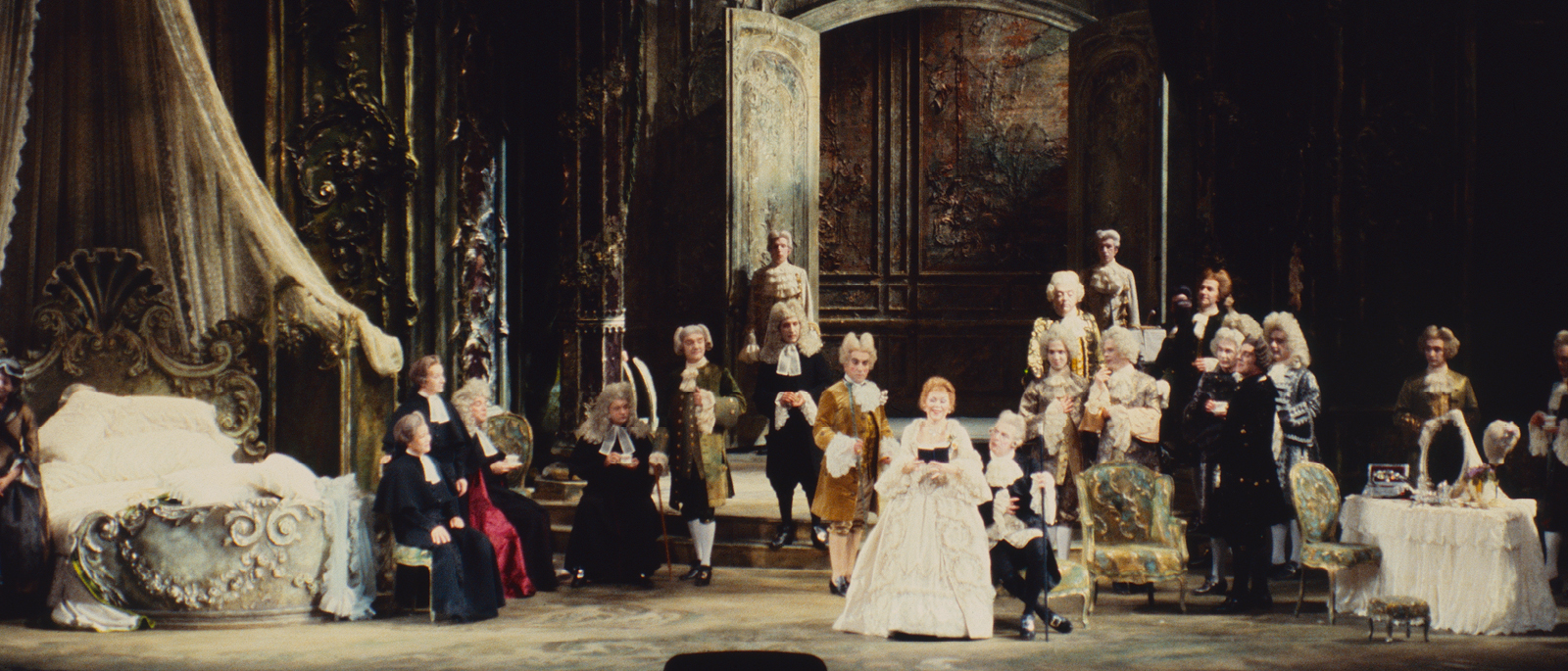
Manon Lescaut
Puccini was supposed to oversee rehearsals for the 1907 Met premiere of Manon Lescaut, but his transatlantic crossing was delayed by a storm at sea. He arrived just in time for the first performance, which starred soprano Lina Cavalieri, tenor Enrico Caruso, and baritone Antonio Scotti. At the performance, Puccini was greeted “by applause from the audience that had every ring of enthusiastic admiration.”
Act IV of the 1912 new production of Manon Lescaut designed by Mario Sala.
Photo: White Studio
At the conclusion of the 1909 –10 season, the Met traveled to Europe for the first time, giving a three-week season in Paris. Arturo Toscanini conducted the performances, including the Paris premiere of Manon Lescaut with soprano Lucrezia Bori in the title role and tenor Enrico Caruso as Chevalier Des Grieux.
Caruso Photo: Herman Mishkin
Act III of the 1912 new production of Manon Lescaut designed by Mario Sala.
Photo: White Studio
The set design for a new Met production of Manon Lescaut in 1949 was by H. M. Krehan-Crayon. Above is the
sketch for Act I.
Left: Never quite as popular as Puccini’s ubiquitous big three — La Bohème, Tosca, and Madama Butterfly — Manon Lescaut was absent from the Met repertory for nearly 20 years before the new production of 1949 with soprano Dorothy Kirsten in the title role. Kirsten began her career singing popular music on the radio before making her Met debut in 1945. Here, she exits her coach with assistance from the Geronte of basso buffo Salvatore Baccaloni.
Photo: Sedge LeBlang
Right: Swedish tenor Jussi Björling sang opposite soprano Kirsten in the 1949 new production. Though he possessed one of the most beautiful lyric tenors of the century, Björling was a famously staid actor, with one critic observing that “Mr. Björling’s merits were entirely vocal, since the art of acting does not fall within his purview.”
Photo: Louis Mélançon
American soprano Leona Mitchell sang the title role in a 1986 – 87 revival of Manon Lescaut, followed by Mirella Freni in 1990. The beloved Italian soprano first gave her renowned interpretation of the role in 1984.
Photo: James Heffernan
Soprano Leontyne Price’s brilliant Met career consisted mainly of Verdi roles, but she sang Tosca in 1962 and Manon Lescaut, seen here, in 1975. Tosca figured prominently earlier in her career when she sang it on NBC-TV in 1955, the first televised opera with a Black artist in a leading role. As one writer put it, “All bars come down before a talent like this one.”
Photo: James Heffernan
Gian Carlo Menotti’s lavish new production of Manon Lescaut, designed by Desmond Heeley, “had the public in ecstasies” in 1980. Searingly passionate performances by soprano Renata Scotto in the title role and tenor Plácido Domingo as her lover were preserved on the Met’s first telecast of the opera that season.
Photo: James Heffernan
The 2008 revival of Manon Lescaut starred Finnish soprano Karita Mattila in the title role, with Italian tenor Marcello Giordani as Des Grieux. In Act III, the pair are briefly reunited before Manon’s deportation.
Photo: Ken Howard
The current production of Manon Lescaut by Richard Eyre opened in 2016 with Latvian soprano Kristine Opolais in the title role and Italo-French tenor Roberto Alagna as Des Grieux, seen here in the opera’s final scene.
Photo: Ken Howard
Manon Lescaut